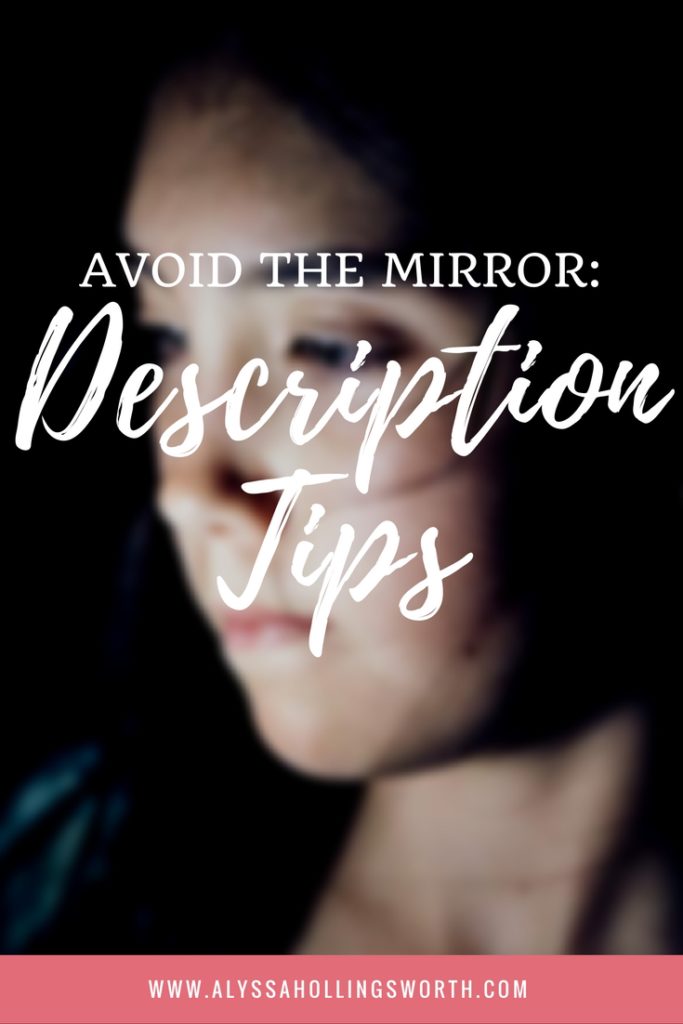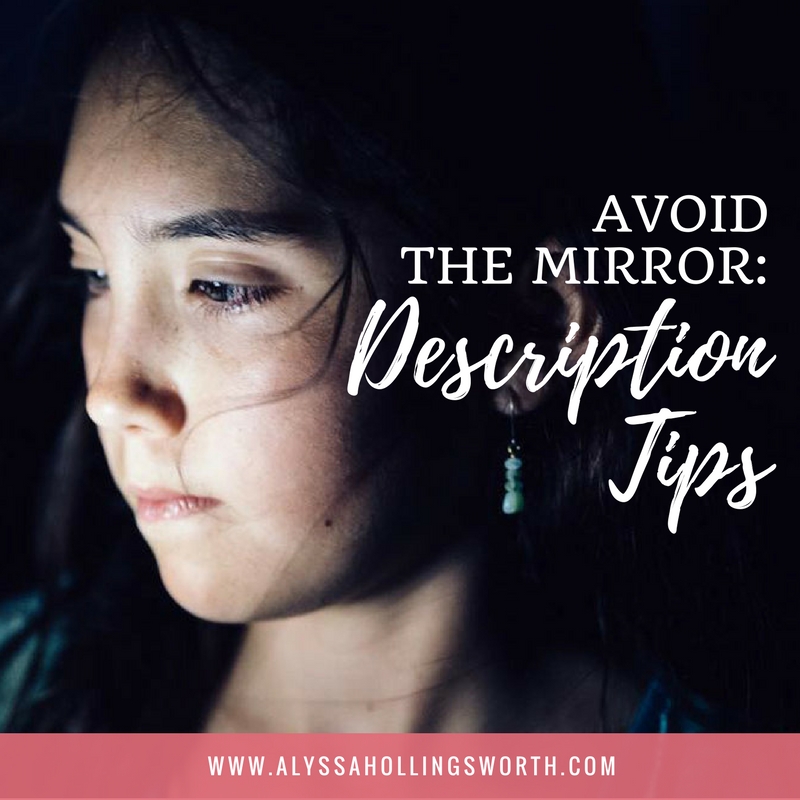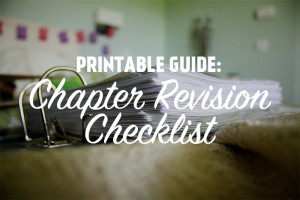 Ah yes, we all know the description cliché: Our hero or heroine looks in a mirror and studies it so that the reader can form a full picture of this character. Bonus points if it’s in the first chapter!
Ah yes, we all know the description cliché: Our hero or heroine looks in a mirror and studies it so that the reader can form a full picture of this character. Bonus points if it’s in the first chapter!
Appearances can be tricky, I won’t deny that — but there are lots of creative ways to get around Ye Olde Mirror cop-out!
My cheat-answer for just about any writing question is intentional details. How do you build a fantasy world? Intentional details. How do you create mood? Intentional details. How do you describe a character? Intentional details.
Details help add context and reality to a scene, but too many (especially in one place) can slow it down. Always approach description through the eyes and motivation of your narrator (even in third person) and try to keep focused on what’s important for the scene or the person.
Try to avoid the mirror by using:
Small details. As with clothing, slipping in little details over time can help the reader build an image more naturally than a block of text.
Example: She brushed back her bristly black hair.
Example: She slouched so she wouldn’t seem so tall in the crowd.
Comparison. The narrator (and his/her descriptions) will always be about finding his or her place in the surroundings. So you can use comparison as a way to show the other characters while also sharpening the focus of your speaker’s image.
Example: Unlike Elatha’s blonde, Perl’s hair had a bit of a red tint to it.
Example: Perl pulled her shoulders back in her best imitation of Elatha.
Example: Beside Layla, even I look pale.
Pictures or memories. This goes along with comparison, but you can also show what a character looks like by comparing them to a time passed.
Example: In the picture, a younger me grins, her hair about five inches shorter and twenty shades less gray.
Example: My old portrait shows a beaming girl without a spec of doubt in her eyes. It’s time I had it redone, before someone notices how the likeness has dimmed.
This is close to the mirror, so only use it to make an important point about change!
Oddities and observations. Your narrator will notice things that stand out about other people, and this can also work in reverse.
Example: “How can you sit so still? I saw you waiting and you didn’t move the whole time I was walking toward you.”
Example: “Hold on, how did you get that scar on your eyebrow?”
Example: “Why do you always fidget with those paperclips?”
You’ll note that last one isn’t a physical description. That’s because physical descriptions of appearance are generally unimportant unless they reveal something about the character themselves.
Think about little things — behaviors, favorite clothes, hair styles, piercings, tattoos — that give insight into people’s inner workings. Those are the details that are most important to convey. Brainstorm the little, almost unconscious habits your character has that show important parts of their personality (like checking the doors are locked every night, or straightening the clothes in stores when they walk past them, or always yielding to someone else at a crosswalk). Some of these might just overlap physical details, too.
Here are some helpful blog entries:
11 Secrets to Writing Effective Character Description
6 ways first person narrators can describe themselves (relevant even if you aren’t in first person)
Describing characters: How to describe faces imaginatively


















